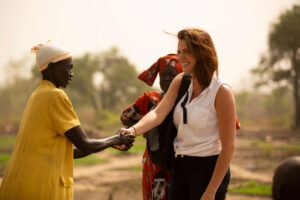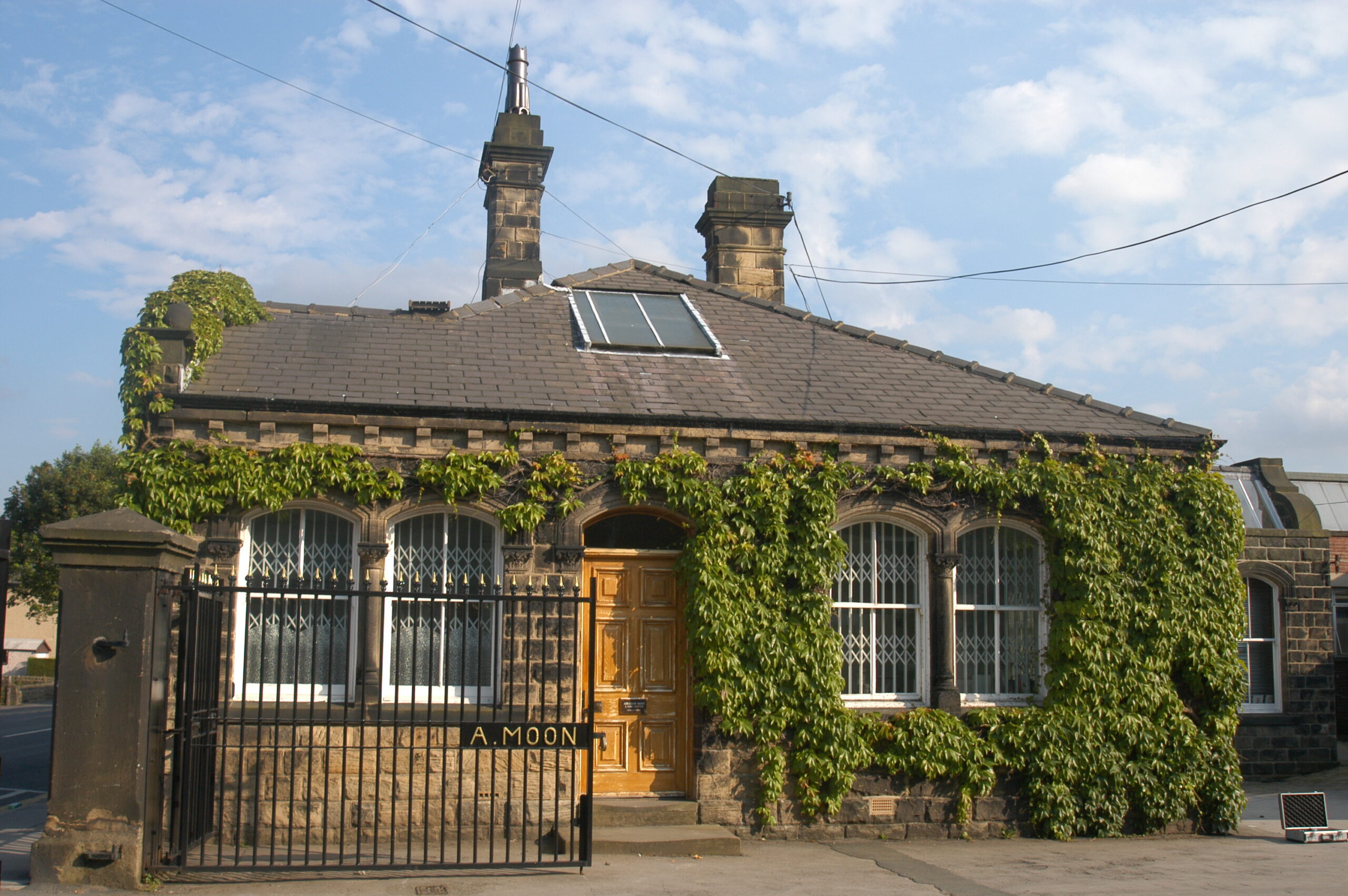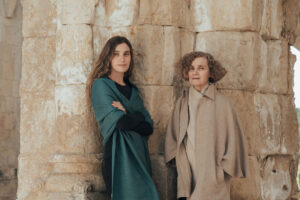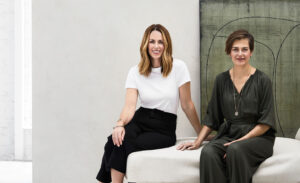
Obakki – A Purpose-Led Lifestyle Brand and Foundation
Founder Treana Peake, supports artisan partnerships and funds development work through the Obakki Foundation.
United Kingdom
Mood of Living November 11, 2016
Catering to an international marketplace using a heritage British vertical woolen mill, Abraham Moon & Sons has worked with everyone from Dolce & Gabbana to Jack Wills. It is a true leader in the industry and has set the standard for luxury wool products for over a century.
The British wool company which is synonymous with consistent quality is steeped in a rich history. Founded in 1837 in West Yorkshire, Abraham Moon & Sons soon evolved into a global business. Spanning decades of production, even including supplying the British army during the First World War, it eventually launched Bronte by Moon in 2009. Today, the company stands out from the competition by differentiating itself as the last fully vertical mill left in England, thereby ensuring direct involvement in every step of the production process. We spoke with Martin Aveyard, Design Director at Moon and Bronte by Moon, to discover the process behind one of the world’s most esteemed fabric manufacturers.
Mood of Living: What makes Bronte by Moon unique?
Martin Aveyard: We are one of Great Britain’s last remaining vertical woolen mills, meaning we are among a select few who continue to complete all processes on one site.
MoL: Please give us a brief history of Bronte by Moon.
M.A: Abraham Moon has its roots in the who’s who of the fashion world including names such as Dolce & Gabbana, Ralph Lauren, Paul Smith and Burberry among others. In the mid 1990’s Abraham Moon merged its experience of fashion design into the world of interiors and launched its first 100% Wool furnishing collection and then in the 2000’s started making wool home accessories. Today Moon boasts over 10 collections of furnishing fabrics as well as hundreds of different throws and cushions designs. Contemporary designs and use of colour alongside more traditional designs offer something to suit everyone’s taste and style.
MoL: Where and how are the products manufactured today? How does the manufacturing process differ from other generations?
M.A: Abraham Moon & Sons is unique in that it is the last fully vertical mill left in England. This means we undertake every process to turn raw wool into finished fabrics and products at the one site. When the raw wool fibre first arrives to the mill it is first dyed a single colour. After dyeing, several colours are then blended together to give a mélange of yarn and rich deep tones to our finished products. After blending the fibre is carded and then spun into yarn. This yarn is then used to weave the cloth on our double rapier looms. The woven fabric is then scoured (washed) and finished by steam pressing.
It is the same process used since the beginning, however now we have machines which speed things up!
MoL: Could you give us a quick breakdown of how the mill operates on a day-to-day basis?
M.A: Depending on the volume of work coming through each process, we have sections of the mill such as Warping (laying the vertical threads in their specific pattern order before weaving) which work 24 hours a day, 6 days of the week. In recent years we have had to invest heavily in new machinery to keep up with public demand! At any given time we have up to 150 people working in the mill out of a total staff of 250.

The mill office of Bronte by Moon.
MoL: Where is your wool sourced?
M.A: Our Merino Lambswool is predominantly from South Africa and our Shetland quality Pure New Wool is from New Zealand.
MoL: How does this particular wool impact the look and feel of your final products?
M.A: Quality starts on the farm; sheep reared on a different diet can affect the quality so we buy our Wool from proven sources. To make our luxury fabrics we need the best natural raw material. The wool that arrives at our site is either scoured or cleaned and combed broken tops, which ensures that there is less than 0.3% impurities within the fleeces.

The wool-spinning process at Bronte by Moon.
MoL: Bronte by Moon produces its products on one of Great Britain’s last remaining vertical woolen mills – what is a vertical woolen mill? How does it differ from other production methods?
M.A: It means we are among a select few who continue to complete all processes on one site. This including the initial design, dyeing, blending, carding, spinning, and weaving before finally finishing and dispatching.
MoL: How does your production set your company apart from other businesses within the industry?
M.A: As a vertical mill we are fully in control of our design, colour palette, and fabric quality, meaning we have no real restrictions on creativity and can easily uphold our high standards consistently year on year. The colour palette in particular we call our ‘Moon signature’; the fashion in which we create our mélange of shades is unique to us and simply cannot be replicated!
MoL: Where does your design team look for inspiration?
M.A: Abraham Moon has a design team of 5 led by myself. Between us we design all the fabrics and accessories manufactured by Abraham Moon & Sons. There’s no time to get bored in the design team! We have constant dialogue and gain inspiration from the designer fashion brands we work with both in the UK and abroad, particularly in markets such as Italy, the USA and Japan, such as Paul Smith, Jack Wills, Burberry, Ralph Lauren and Dolce Gabbana. Our customers design briefs that often stretch our creative boundaries.
MoL: What were the major obstacles in the evolution of your company? What are the challenges of your business today? How do you stay on trend and relevant in today’s global market?
M.A: The shift in the 1990s towards man-made fibers and the globalization of manufacturing were two particularly challenging trends that we eventually came through; early on we started to differentiate our products by quality rather than price. Today the challenges are much different and in a good way! One of the main balancing acts we have to perform is between design progress and commercial success, which can be tricky to achieve.
Staying on trend is made far simpler by our in-house Bronte design team of six, who also work on a regular basis with our fashion customers’ design teams including the likes of Paul Smith, Ralph Lauren, and Boden.
MoL: What are some of the obstacles faced on a daily basis?
M.A: Put simply, space. We’ve stood on the same site in Guiseley (near Leeds) since our inception in 1837. Because of our phenomenal recent growth, we’re having to look at more and more innovative ways of freeing up space within the mill building for expansion.
MoL: How does Bronte by Moon give back to its community?
M.A: We often offer educational mill tours to both local and national Colleges and Universities. The mill also often donates to charity, such as with our WW1 Commemorative Throw collaboration with the Royal British Legion, and is a proud supporter of the Campaign For Wool, which works tirelessly to raise the profile of the Woolen Textile industry.
MoL: What is the future vision for Bronte by Moon?
M.A: More of the same! Beautiful products, ever-higher quality, and evolving design & colour choice for interior accessories.
Photography courtesy by Bronte by Moon

Founder Treana Peake, supports artisan partnerships and funds development work through the Obakki Foundation.

ÁBBATTE creates handmade textiles in Spain on the grounds of a 13th -century Cistercian monastery in the town of Segovia.

Driven by ethics as well as aesthetics, the Armadillo design studio creates rugs that are made with natural materials and sustainable processes.